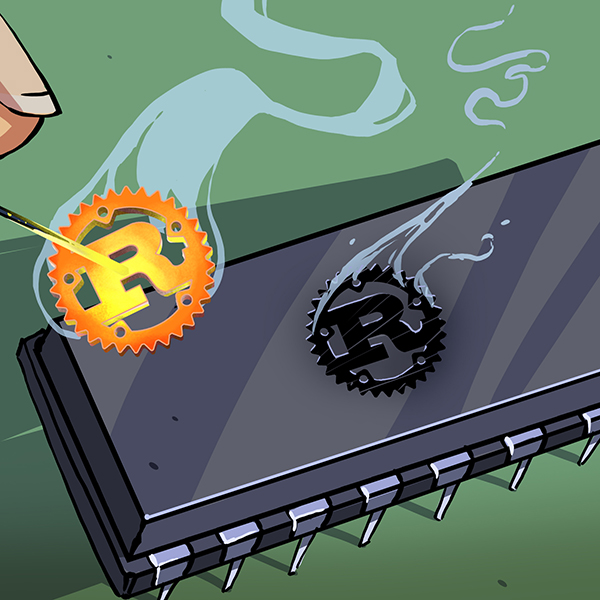![]()
[Michel] was in need of a 9V battery connector, and in a brilliant bit of insight realized 9V batteries will plug directly into other 9V batteries (just… don’t do that. ever.) Taking a dead 9V, he tore it open, was disappointed by the lack of AAAA cells, and soldered some wires onto the connector.
Sometimes a project starts off as a reasonable endeavour, but quickly becomes something much more awesome. [Wallyman] started off building a hammock stand and ended up making a giant slingshot. We’re not one to argue with something that just became a million times more fun.
We’ve seen solder stencils made out of laser-cut metal, photoetched metal, plastic cut on a vinyl cutter, laser-cut plastic, and now finally one made on a 3D printer. It’s a pretty simple process – get the tCream layer into a .DXF file, then subtract it from a plastic plate in OpenSCAD.
Apple loves their proprietary screws, and when [Jim] tried to open his Macbook Air with the pentalobe screwdriver that came with an iPhone repair kit, he found it was too large. No problem, then: just grind it down. Now if only someone could tell us why a laptop uses smaller screws than a phone…
[Victor] has been playing around with an RTLSDR USB TV tuner dongle for a few months now. It’s a great tool, but the USB thumb drive form factor wasn’t sitting well with him. To fix that, he stuck everything into a classy painted Hammond 1590A enclosure. It looks much cooler, and now [Victor] can waterproof his toy and add a ferrite to clean things up.

















The laptop screws weren’t smaller than the ones in the phone. “I then realised that the head on this screwdriver has a stretched sort of taper so I basically ground the end of it with a grindstone fitted to my Dremel tool until it fitted the [macbook] screw-head”
I get it it. It’s like if you grind off the tip of the carrot your carrot has a fatter tip.
The 9V battery clip idea goes way back – I remember doing that 50 years ago – I suppose you can call it an oldy but a goody…
Those little tricks need to be repeated ocassionaly. So we dont forget and so more people consider it common knowledge. It is always nice to see the tricks used in different builds (as long as we do not start getting it repeated every week :-)
The trick is probably about as old as the battery-connector, I am pretty sure the designers realised that it was possible (perhaps to make it cheaper to manufacture; same part for both the battery and the connector)
To also re-iterate, solder an old 9v battery connector to a 9v wall wart to make a “battery eliminator”.
Particularly good at eliminating 9v batteries that you snap on to the connector…
B^)
I think every single person who ever made anything out of electronics used an old battery as connector source. Even steve jobs I expect.
I don’t really quite understand the way the 9V batteries connectors are designed. Even without connecting them back to back (which I believe a lot of kids will do that in a heart beat), simply pushing a 9V against a metal plate will close the circuit. So, if you store batteries in a tin can, you will find that they maybe empty by the time you need it. Is there any other reason for that?
http://www.youtube.com/watch?v=8hwLHdBTQ7s
Dupe:
http://hackaday.com/2012/12/18/244-9-volt-batteries-in-series-arcing-ensues/
Agreed, but should have been mentioned :)
Bonus for instant conversion back to hammock with Hawaiian slide guitar sounds and a Mai Tai in hand when the cops show up.
+1!